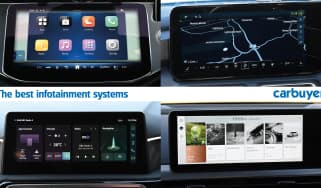What is a CVT gearbox? Reliability, pros and cons, and E-CVTs
We cover how a CVT gearbox works, its benefits, and whether you should buy a car with one
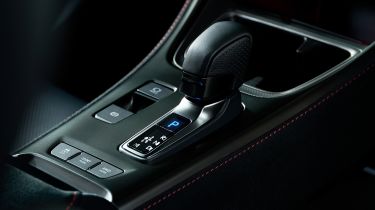
Automatic gearboxes can be found in nearly every new car today, but not all of them are the same. CVT (continuously variable transmission) gearboxes are one type of automatic, and they work in a different way to traditional ‘torque converter’ or ‘dual-clutch’ gearboxes.
Only a handful of manufacturers use CVT gearboxes, but they’re found in some of the UK’s best-selling cars, so it’s important to be aware of what they are and how they work if you’re on the hunt for a new car. Like most automotive technology, there are pros and cons to CVT gearboxes which we’ll cover in the guide, along with how they work and their reliability. We’ll also cover the differences between traditional CVTs and E-CVTs, another continuously variable transmission found in hybrid cars.
 Manual or automatic gearbox – which is best?
Manual or automatic gearbox – which is best?
For a good starting point for your car-buying journey, you can read our list of the best automatic cars on sale today.
What is a CVT gearbox and how does it work?
A continuously variable transmission (CVT) is a type of automatic gearbox, and it operates in much the same way to a traditional automatic gearbox from behind the wheel. You turn on your car, select ‘Drive’ and away you go, with no clutch pedal or gear changes to worry about. That means a CVT-equipped car can be driven on an automatic driving licence.
However, a CVT works quite differently to a normal automatic gearbox under the skin. In fact, calling a CVT a ‘gearbox’ is slightly misleading as it doesn’t have any physical gears at all. Instead of using a fixed number of gear ratios – like a five-speed or six-speed gearbox – a CVT uses a pair of cone-shaped pulleys connected by a chain or belt. These pulleys can be continually adjusted to create an almost infinite number of ‘ratios’.
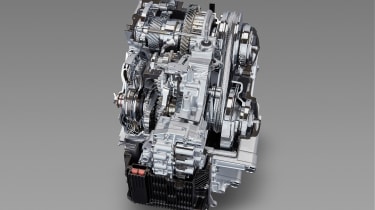
If that sounds a bit confusing, the thing to remember is that a CVT gearbox doesn’t have to jump between gears like a regular automatic would, from second to third gear, or fifth to fourth, for example. Instead, the pulleys in a CVT will continually adjust from the moment you set off, all the way up to motorway speeds.
You can hear this when you’re driving; instead of the engine producing an audible drop in revs between up-changes, a CVT gearbox has a tendency to produce a continuous drone as the car speeds up.
What about E-CVT gearboxes?
E-CVTs (electronically-controlled continuously variable transmissions) have grown in popularity over the past decade, and while they sound similar to regular CVTs, that extra ‘E’ makes a lot of difference. Both offer a near-infinite range of continuously variable ‘gear ratios’, but the way they go about transferring power from the engine to the wheels is very different.
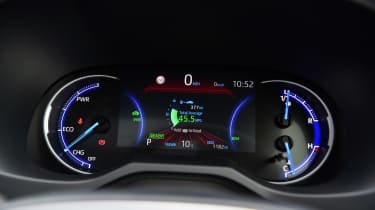
E-CVT gearboxes are typically found in hybrid cars and are used to combine the outputs of the combustion engine and one or more electric motors. Unlike a regular CVT, there are no pulleys and belts here – instead, E-CVTs use a special set of planetary gears to transfer power to the wheels.
This gearbox allows the power from the engine to be used for different purposes. Under heavy acceleration, the engine can power the wheels directly, while in a low stress scenario, the engine can be used to recharge the battery and the electric motors can drive the wheels. A computer controls this process – hence the name – and allows the hybrid system to operate very efficiently. Like a regular CVT, the engine will operate at its most efficient speed, meaning you often get that tell-tale CVT droning noise as the engine sits at constant revs under acceleration.
With no pulleys or belts to worry about, there are very few components to go wrong in an E-CVT gearbox. They are used by Toyota, Nissan and Lexus to name a few brands, and have proven to be very reliable.
What are the pros of a CVT gearbox?
By having an infinite number of gear ‘ratios’ to vary between, unlike a regular automatic that might have just six or seven, a CVT gearbox can keep the engine in its optimum rev range more of the time. Theoretically, this can result in fuel economy gains versus a traditional automatic.
CVTs are some of the smoothest gearboxes, too. With no physical gears to swap between, there’s no jolt or pause as it changes up through the gears like some traditional automatics. Acceleration is continuous and linear, and can make the driving experience more comfortable.
CVT gearboxes are fairly simple in their design and construction and have been in production for decades, so they’re relatively reliable as a result. As long as you stick to a regular service schedule, a CVT should be no more problematic than a traditional automatic gearbox.
What are the cons of a CVT gearbox?
One of the main drawbacks of a CVT gearbox is a byproduct of having no physical gear ratios to swap between. Many drivers are accustomed to the sound of a traditional automatic or manual gearbox, with step changes in the engine revs as you accelerate. CVT gearboxes can create a droning noise that holds steady, instead of increasing or decreasing with engine speed. This can be a bit disconcerting for some drivers, and takes some getting used to.
The droning noise can be particularly noticeable under hard acceleration, which has a tendency to send engine revs soaring. While this is perfectly normal, some drivers find the noise a bit harsh. As a result, CVT gearboxes are generally best suited to relaxed, economical driving, and not high-performance applications. Plus, the chain or belt in a CVT gearbox is under a lot of strain, so it would be at higher risk of wearing out if connected to a high horsepower engine.
Are CVT gearboxes reliable?
The CVT has a good reputation for reliability thanks to its simple design. What’s more, they usually lead relatively unstressed lives because they’re mated to low-power engines, such as the ones in superminis and hybrids. Sticking to a regular maintenance schedule and ensuring CVT transmission fluid is changed on time should see them work perfectly for at least as long as any other type of gearbox.
Which cars come with a CVT gearbox?
Today, most CVT and E-CVT gearboxes are found in hybrid cars from Japanese manufacturers. Toyota’s ‘Hybrid Synergy Drive’ E-CVT system has been used for over two decades, along with its premium sister-brand Lexus. Honda, Subaru and Nissan also use CVT gearboxes for some of their automatic models. Outside of Japan, the hybrid versions of the latest Ford Kuga use a CVT gearbox.

Some manufacturers have developed CVTs with ‘step’ technology to mimic the gears of a traditional automatic gearbox. Audi offered this system throughout the early 2000s, and a similar technology can be found in modern Subaru models. Some manufacturers have fitted paddle-shifters to cars with CVT gearboxes to give drivers the sense of controlling gear changes, even if in reality they aren’t.
Should I buy a car with a CVT gearbox?
Most drivers will be more than happy with a car with a CVT gearbox – they’re smooth and can return great fuel economy. The latest CVTs are also very reliable, so shouldn’t pose any more issues than a regular automatic.
You’ll be able to tell from test-driving a car with a CVT whether the way the gearbox works suits your driving style and the way you’ll use the car. If performance isn’t your top priority, you mostly use your car around town and you simply don’t want a manual, then a CVT automatic may make the most sense. Driving enthusiasts and those after the ultimate in refinement are likely to prefer a different type of automatic gearbox.
What’s the history of the CVT gearbox?
The CVT gearbox was first patented in 1886 with the arrival of the motorcar. The CVT became more mainstream thanks to DAF’s ‘Variomatic’ gearbox in the 1950s. Today’s CVT gearboxes use the basic idea of the Variomatic and manufacturers such as Honda, Nissan and Toyota fit them to their cars.
Thinking about buying an electric car? Read our guide to electric car gearboxes…
Recommended

In-car safety assistance systems leaving drivers confused and dissatisfied
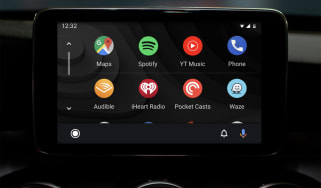
What is Android Auto? Apps, music and new gaming features
Most Popular

New Smart #5 Brabus is a 637bhp far cry from the brand’s city car past

Best car leasing deals 2025: this week’s top PCH offers
Tips & advice

Car dashboard warning lights: what does each symbol mean?

Electric car charging stations: public networks, charger types, apps and maps


